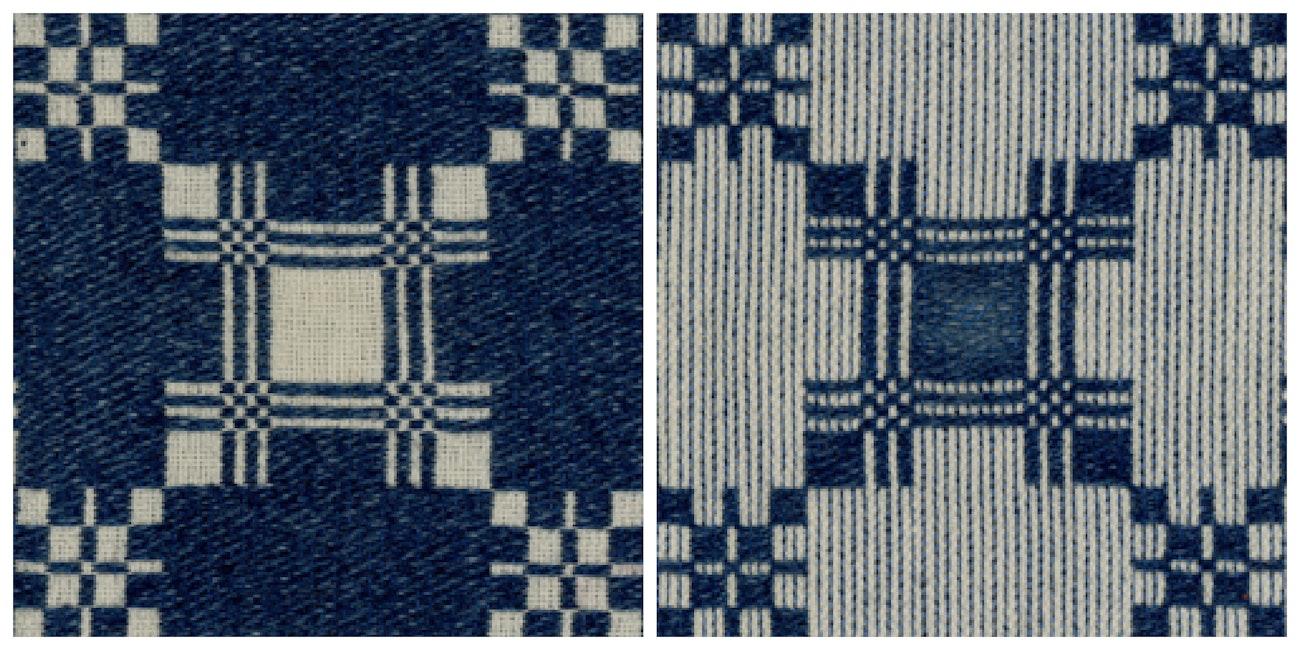In the last Ask Madelyn (November 24, 2015), a reader asked for a definition of doubleweave. In my answer, I first decribed “block” or “patterned” doubleweave. There are several other types of doubleweave, and another version is described here.
In block doubleweave, the two weaves are usually equal to each other in structure (plain weave or twill, for example), yarn type and size, and sett. A doubleweave in which the two weave structures are balanced plain weave using 10/2 cotton, for example, is likely to have an overall sett of 48 ends and picks per inch, 24 ends and picks per inch per layer. If you took one of the weaves out of this doubleweave cloth, the other would remain as a stable and intact plain-weave cloth and vice versa.
In another form of doubleweave that looks like block doubleweave on the face but not on the back, the two weaves are not equal in yarns and setts. This category is called “lampas” in most texts. In lampas, one of the weaves is a balanced weave (plain weave or twill or satin) with ends per inch equal to picks per inch. The other weave, however, has a fine warp and a heavy weft and the warp sett is more open than the warp sett of the balanced weave. The balanced weave is called the “main,” “independent,” or “foundation” weave, the other weave the “secondary,” “supplementary,” “dependent,” or “pattern” weave. In the secondary weave, you see only the heavy weft, not its finer warp.

Photo a on the left is the front of a beiderwand sample, Photo b on the right is the back.
An example of a lampas in which both weaves are plain weave is “beiderwand,” originally from Germany. In beiderwand, the ratio (in terms of sett) between the warp of the main weave to the warp of the secondary weave is 4 to 1. Lampas weaves are not reversible; compare Photos a and b. In some ways, this structure is more durable than block doubleweave. In the “background” (the blue part of Photo a) the two weaves interweave with each other, increasing the stabilty of the cloth.
With lampas, as with any doubleweave, if you remove one of the weaves from the cloth, the other weave remains an intact weave structure. With lampas, however, the secondary weave would be too sleazy (with its widely spread fine warp threads) to hold up to any wear.

Photo c on the left is the front of a lampas sample, Photo b on the right is the back.
As with block doubleweave, the two weaves can also be twill or satin. The cloth in Photos c and d is a twill/twill lampas. An advantage to beiderwand/lampas is that fewer shafts are required for each block than are required with block doubleweave.
Stay tuned for one more version of doubleweave.

